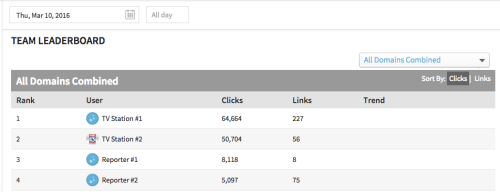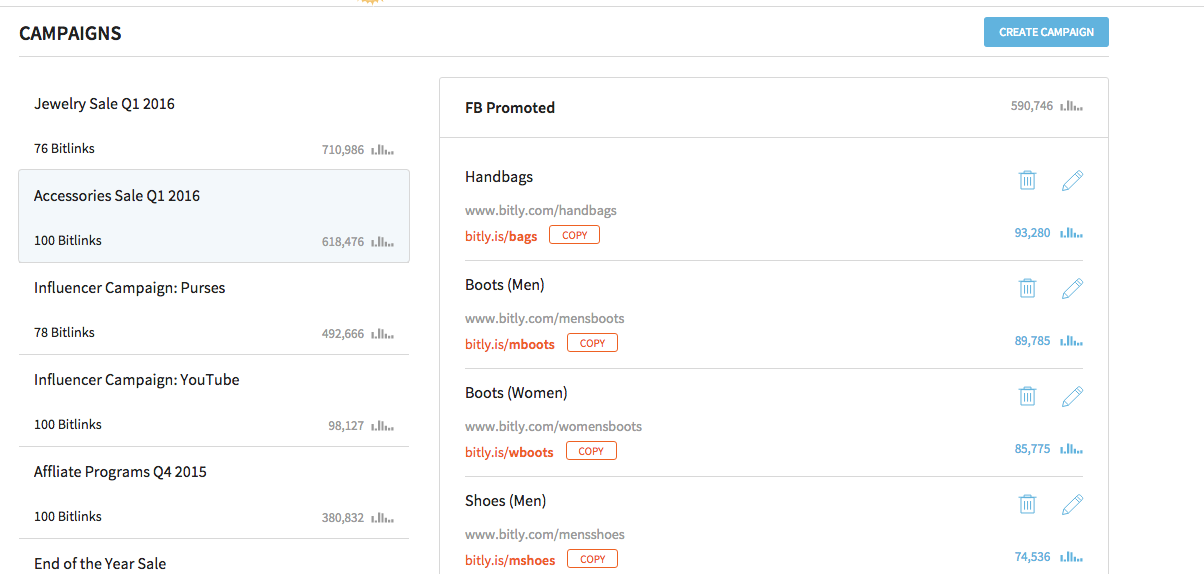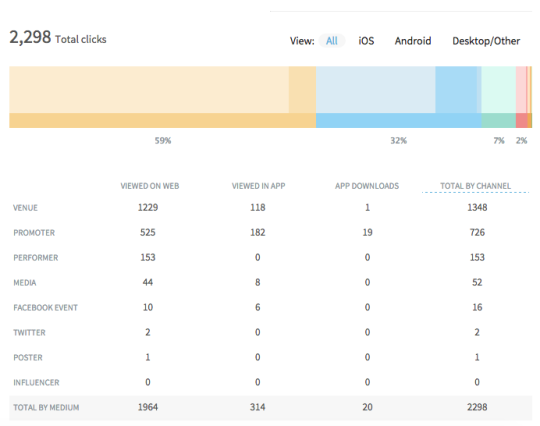
When you’re measuring social media metrics, it’s hard to keep it exciting. Especially in larger companies, where each team has its own way of building spreadsheets. It can take days to wait for someone to pull a report and even then, it takes several more days to make sense of the numbers against your own.
But what if you could create a leaderboard that kept track of social engagement across every team, business unit, and individual?
Some Bitly customers do that on a daily basis. When every employee is plugged into the same Bitly account, it makes it really easy to transparently track clicks and engagement across the board. It also opens up more conversations between teams and breathes room for innovation. Here are three ways they’re doing it:
Publications: Outlet, Journalists, Stories

At this point, Facebook is the number one referral for media publications. So sharing stories across social media is critical for publications.
Publishers want to know: which stories are most popular? Which journalists are sharing stories and who has the most engaged following? Bigger media groups want to know the data about specific outlets. Is the team at a radio station less social than TV? What about a digital publication and a print publication?
With Bitly’s Leaderboard, publications can build out different user seats for outlets, journalists, and teams. You can drill down into how each of those accounts is doing, too, optimizing social media strategies for the entire organization or tracking the performance of an individual story.
“Bitly gives me a central place to check how each of our 60+ accounts are doing. That way, I can see how many links are being created, how each journal is performing, and how many people are engaging with the content. I can help social teams optimize content and strategy based on those results,” says Rosemary Hall, Digital Marketing Manager, BMJ Publishing
Retail: Product Pages & Campaigns

Historically, it’s been hard to track the performance of different products against one another. With so many disparate point-of-sales systems, companies rarely have a comprehensive record of sales and the channels that work best for them.
That’s changing as retail companies are getting better with analytics. With Bitly, you can create sets of links and group them together depending on channel and ad, then further divide them by product or even region. By measuring engagement across so many channels in one place, it’s easy to see which products and which content resonates with various audiences.
Entertainment: Talent, Venues, 3rd Parties
Enterprise social media campaigns are often amplified by affiliates, partners, and advocates like talent or promoters. If you give each one of those influencers a Bitly link to share, you can actually track the results from as many offline channels as you want, gauging impact and performance.Here’s how a typical media organization uses Bitly to analyze how venues and talent are driving engagement:

In the screenshot above, you can see that this performer shared their Bitly link across channels such as Twitter, Facebook, Amazon and iTunes. What’s interesting here is that they can see Amazon drives more revenue for them on Twitter for example, and schedule their tweets accordingly.
Likewise, since so many entertainment companies rely on media today, you can also use Bitly to track clicks directly from a YouTube video to the iTunes store:

A Macro View of Micro-Moments
The hardest part about social media management for enterprise is continually optimizing campaigns based on data. Without one central way to keep track of things, a lot of data ends up being created in vain, since there is no one dedicated to processing and acting on the findings.
Just by using a link, you can start linking every marketing channel and bringing teams closer together, too.